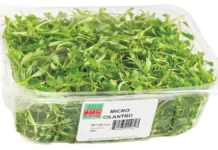
Article contributed by Lucy Wyndham
Consumer behavior in the food industry is transforming, thanks to emerging e-commerce and technological trends. The face of dining out and food establishments has changed from the traditional brick and mortar image.
One of those hot spots for e-commerce growth within the food industry: The United States Of America. In 2015, we saw the value of online food delivery sales cross the $4 billion mark. By 2016, 33 percent of consumers were using some form of online platform regularly for food delivery and reservations. Consumer awareness is growing and preferences are shifting toward a digitalized and more organic approach to their food choices. Here’s is how the food industry is changing, thanks to technological advances.
The Transformation So Far: In The Kitchen
 We have seen the introduction of several trends throughout the food industry, integrating themselves in every level from restaurant recommendation apps and knowledge sharing to home assistance in the kitchen. The rise of online subscription boxes and meals kits has been at the forefront of emerging developments changing the face of the industry in 2018. These kits are removing the need to head to the physical supermarket and are removing the age old conundrum of meal planning for busy professionals and families. And it is not just the consumers’ attention that the initiative has attracted. In February, 2018 the American government announced plans to replace food stamps with boxes similar to those currently on the market.
We have seen the introduction of several trends throughout the food industry, integrating themselves in every level from restaurant recommendation apps and knowledge sharing to home assistance in the kitchen. The rise of online subscription boxes and meals kits has been at the forefront of emerging developments changing the face of the industry in 2018. These kits are removing the need to head to the physical supermarket and are removing the age old conundrum of meal planning for busy professionals and families. And it is not just the consumers’ attention that the initiative has attracted. In February, 2018 the American government announced plans to replace food stamps with boxes similar to those currently on the market.
Retail & Dining Behavior
The online grocery market has also continued to develop, with mobile apps becoming commonplace in consumers’ habits and homes. The supermarket industry is a $330.4 billion dollars one. As of 2017, 31 percent of American consumers were likely to buy their groceries online. However 96.9 percent of consumers reported they still visit their local stores for purchases of some nature. Click and collect for orders has also seen heavy investment by businesses in 2017 with companies such as Amazon and Kroger joining the worldwide trend. With the recent acquisition of WholeFoods, Amazon stands to become a bigger player in the grocery market.
Both casual and fine dining food establishments are moving towards a more digital experience for the consumers. With food ordering apps such as Ubereats and also mobile reservation apps, the dining out experience is becoming much more technologically advanced. Now, apps also offer waitlist times for a table and some restaurants are rolling out tableside tablet ordering/ payment model (POS systems). The model also offers a feedback option giving anonymity to consumers.
The Future Of Food Industry: Voice Technology
The food industry is constantly evolving in a bid to cater to changing consumer demands. Voice enabled assistants from tech giants such as Amazon and Google are quickly making their way into consumers’ food behavior. According to CapGemini, 40 percent of consumers will prefer voice enabled assistants over websites or mobile apps in the next three years. Their use is extending to dining out as well. While some takeout establishments, such as Dominos, offer voice ordering, the selection is still limited. However, demand is growing; 56 percent of consumers would like to order using voice enabled applications. Food giants such as Campbell’s Soup Corporation are currently building their own apps compatible with voice technology to allow their consumers to look up recipes.
Food Wastage
Food wastage is also getting a makeover. Americans waste up to 40 percent of food each year. With rising awareness about the impact on the environment and wallets of consumers, food wastage is being reinvented and repurposed into by products. We can expect to see a lot more companies joining the cause in 2018 and beyond. Most recently, we have seen startup companies such as Froozer and Cerplus making headlines with their business models.
As time progresses, we will continue to see the changing demand of consumers and the emerging technological advances to go along with it. Right now, mobile is having its moment from reserving a table to meal planning (and purchasing). As both consumers and businesses focus on online platforms and availability, we can safely say the food industry is transforming before our eyes.























